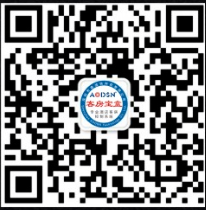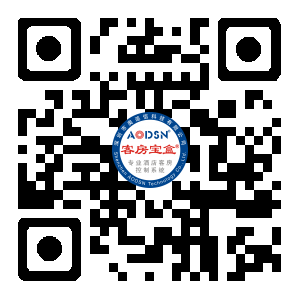Intelligent lighting products and cloud based Internet of Things applications
03 Nov,2022
With the promotion of environmentally friendly LED lighting, green energy-saving and smart buildings in various countries, smart lighting has gradually entered general communities and homes from industrial and commercial buildings, government units and public buildings, providing more energy-saving, smarter, and more convenient control. , to create different light and atmosphere environments to improve people's living quality; moreover, with the popularization of the Internet of Things, services that can be controlled through the cloud will become the mainstream of intelligent lighting development...
Smart lighting from basic lighting needs to mood control
Most of the traditional lighting control methods are based on switches at fixed locations. In recent years, driven by the popularity of smart phones and the trend of the Internet of Things, a new generation of lighting has become more intelligent. Through the combination of sensing devices and information management The platform, combined with the Internet, integrates lighting with the living environment to achieve the application of "smart lighting".
Compared with traditional lighting, smart lighting can provide people with remote monitoring of these lighting equipment through mobile devices, and can change the color of light according to mood to create different light atmospheres, and can even further detect whether people are on the scene , and sense the physical, psychological and environmental conditions of the people on site to automatically turn on and off or adjust the light brightness, color temperature and other capabilities to create a more suitable, more humane and comfortable lighting space.
Major manufacturers launch smart lighting products to create light and atmosphere situations to attack the dressing market
With the rise of the LED lighting industry in recent years, many major IT companies and existing lighting companies have launched LED lighting products and LED bulbs of various specifications, emphasizing the characteristics of more power saving and environmental protection, and attacking the huge replacement market. Install (Retrofit) market. However, the supply of LED chips is oversupplied, and the price of LED light bulbs that only emit light is extremely high. Therefore, only differentiated products with different characteristics can survive in the market.
Smart lighting seems to be the antidote for this industry. Built-in ZigBee or Z-Wave chips in LED bulbs, giving them the ability to be controlled wirelessly, coupled with smart home hub (Hub) products and exclusive apps, you can let your smartphone or tablet, Through Wi-Fi, 3G/4G, you can connect to your home at home or outside to control the on and off of the light bulb, brightness, color temperature, and even color, etc., to stimulate market demand.
Among smart light bulb products, products with full-color dimming function are the most topical and market attractive. Many manufacturers have launched such products, and can control the on/off, brightness, and color of the light bulb through mobile phones or tablets; it also has timing settings to control the behavior of the light bulb, so as to increase the added value of LED light bulbs in the home environment.
Dutch merchant Philips (Philips) launched the first generation of Hue smart LED bulbs in 2012, with its Hue Bridge bridge connected to the Wi-Fi wireless router at home, in order to control the opening and closing of the bulbs, light color and Brightness, providing high-quality and colorful lighting environment. The product was launched in the Apple Store at the end of October of that year, attracting the attention of many IT and lighting industries.
The lighting and atmosphere control of smart light bulbs are designed wirelessly
In terms of control design for new LED light bulbs, most of them choose to implement wireless remote control, and the industry has aimed to use mobile phones or tablets as remote controls as the product design direction of smart light bulbs. This is because of the traditional wired control, first of all, wiring on the wall requires a large cost, and it is best to take it into consideration when planning a new building; but most of the general replacement market is not equipped with this new control method. Therefore, choosing a convenient and remote-controlled wireless protocol is the common design goal of manufacturers.
In the past, there were many types of wireless communication, and most of them did not design their communication standards for "lighting". Subsequently, many emerging low-power wireless communication standards designed for smart homes have added "lighting" and have been adopted by manufacturers.
The control method has been greatly rectified and can be operated with or without a smart home hub
In the smart home lighting market, Philips is the first to adopt the ZigBee wireless protocol, combined with its Hue Bridge smart lighting solution, making ZigBee famous in the market. However, due to the fact that there are not many terminal devices with built-in ZigBee, and Philips’ product portfolio, it seems that the investment cost is too high for some beginners who want to try (the first generation of 3 Hue bulbs with the Hue Bridge Starter Kit, the asking price is about 150 US dollars), and can only be used with IOS mobile phones, so that the product can only go to the high-end market route.
Then LIFX launched the Color 1000 smart light bulb in 2012, using the Wi-Fi wireless protocol. It also has a built-in 6LoWPAN chip/connection protocol to transmit instructions between the light bulbs, and the control can be achieved without using a bridge. Let the light bulb also get a lot of attention in the market.
Between 2013 and 2016, many manufacturers launched RGB Bulbs with various protocols, including Z-Wave, which requires a Hub just like ZigBee, and Bluetooth, which does not require a Hub and is directly controlled by a mobile phone. Therefore, the mainstream RGB and pure white dimmable light bulbs on the market only use Wi-Fi, ZigBee, and Bluetooth as the wireless communication protocols.
IT giants attack! Different camps launch different smart home support products
Since Apple’s IOS 8 has officially joined the HomeKit development kit, its Works With Apple Homekit certification has enabled many manufacturers to launch various smart home appliances that are compatible with IOS, and can even be used with Siri’s voice commands to control RGB light bulbs. The other camp, Google, also joined the battle. It bought the Nest smart home platform and launched the Works With Nest certification, which also has voice control capabilities, which once again ignited the battle in the SmartHome Hub market.
Since Apple and Google launched their own smart home platforms, the control is no longer limited to indoor homes, but can also be extended to remote control when people are outdoors. In addition, it also supports voice control, making their platforms supported by many manufacturers.
For example, in 2015, Philips re-launched the second generation of Hue, which supports both Apple's HomeKit and Google's Nest smart home platforms, allowing both IOS and Android phones to control its RGB bulbs, and use its Hue App to pair with its Hue Bridge 2.0 products , you can control up to 50 light bulbs by voice through Siri, and achieve the control and change of the home situation.
Manufacturers from other camps such as Wink, Insteon, Belkin (WeMo), Samsung (SmartThings), Lowe (Iris), etc. have launched their own exclusive smart home hub products, with their exclusive App, to meet the needs of controlling various smart home appliances. . It has also received support from many light bulb manufacturers. For example, OSRAM's Classic series bulbs can support SmartThings or WeMo, GE bulbs can support Wink, and Cree bulbs can support Wink, SmartThings, Wemo, etc., and there are bundled packages with Wink, etc.
Free Hub products come out to achieve regional and even remote control
The above-mentioned smart home products almost all meet the control requirements through so-called SmartHome Hub, Bridge and other products. There are also manufacturers who choose to avoid the Hub and reduce the purchase cost of users. For example, LIFX adopts the Wi-Fi protocol, and Xiaomi (Mijia) smart home products (including Yeelight bulbs, LED desk lamps, etc.) also use the Wi-Fi protocol. Wi-Fi Router/AP can realize the function of wireless control; once the device is registered with the cloud, it can be connected to the cloud through 3G/4G to control the smart appliances at home in the future, without using the intermediate Hub product at all .
Manufacturers who choose to design with the Bluetooth protocol, such as MiPow (Playbulb), ADATA (Aura RGB), etc., can allow users to directly use their mobile phones with their own apps to achieve control functions.
Combining cloud services with intelligent IoT products to expand the application front of intelligent lighting
In addition to Hub products, smart home products combined with the concept of the Internet of Things are also brewing in the market. For example, in 2014, Amazon launched Echo, a smart home application product combined with AWS cloud services. As long as users have an Echo, they can use the AVS (Alexa Voice Service) voice service to call a car, order food, check the weather, check the time, check the date, Set the alarm clock, listen to music, and the built-in speaker of Echo will reply or play the result of the order or inquiry to you. Many smart light bulbs have Works With Amazon Alexa certification, such as Philips, Cree, LIFX, TP-Link and other smart light bulb products support the Amazon Alexa standard.
Amazon AVS and IFTTT Recipe service endow lighting products with better intelligent use.
In addition, like the IFTTT (IF This Then That) cloud service, its recipe (Recipe) function is to set the bound individuals (such as products, situations, objects) under different conditions, which will trigger the behavior of other devices. For example, you can set the brightness of the bulb to increase when the weather becomes cloudy. Or change the light color according to different festivals to make life more interesting.
To sum up the development of smart lighting products in the future, cloud-based IoT applications will inevitably be used to achieve convenient, fast, voice-enabled, and programmable applications, so that users do not even need to manually control through mobile phones to achieve true intelligence. lighting applications.
(This article is reproduced from China Power Grid)





